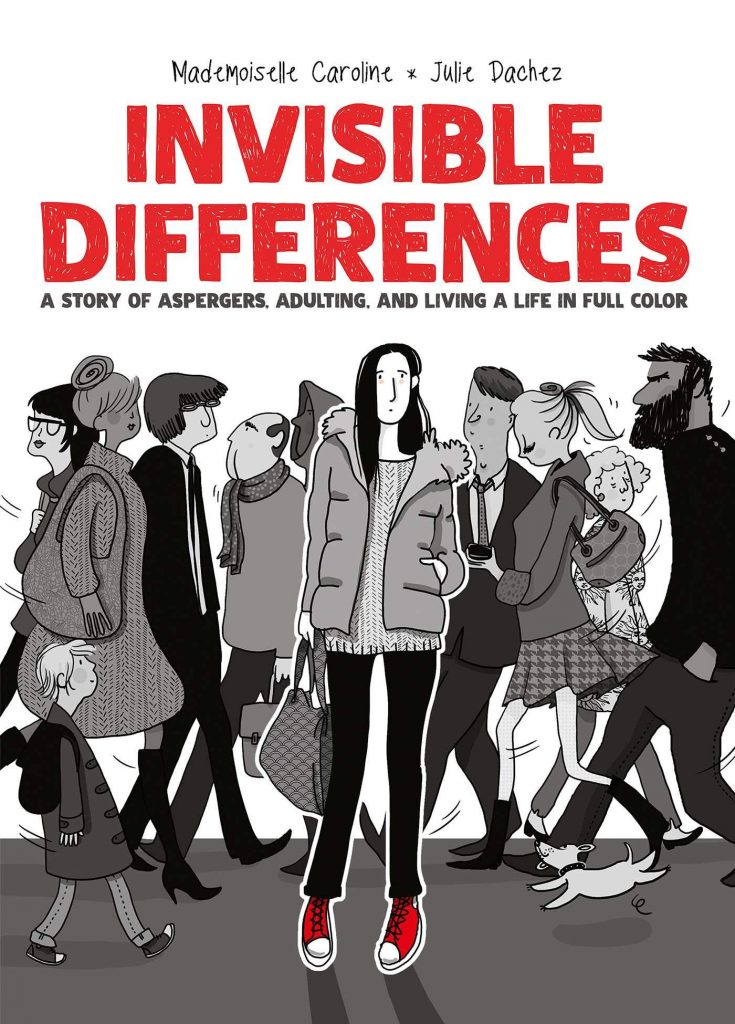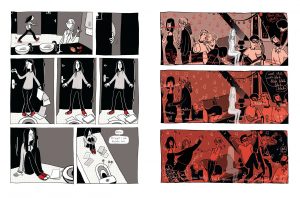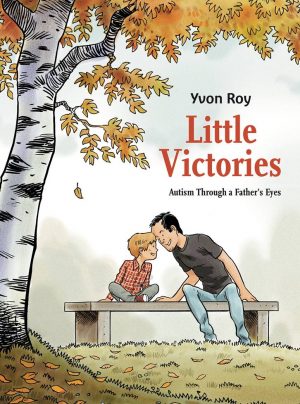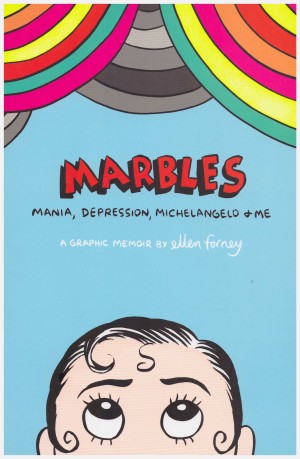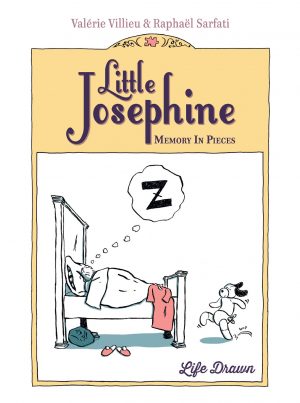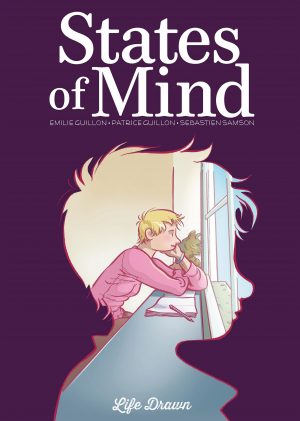Review by Frank Plowright
Marguerite is 27, and employed in an office that she arrives at early each morning, following a strict routine, but doesn’t connect with her fellow workers, who see her as distanced and sulky. She has a boyfriend, but it’s not a physical relationship, and she doesn’t seem to connect any better with him than she does with others. We’re shown that she finds any kind of social situation awkward at best and stressful at worst, and would rather spend her time away from people exploring her own interests.
Although the name is different, Marguerite is author Julie Dachez’s avatar. Dachez went through life unable to connect, and a diagnosis of Asperger’s Syndrome at 25 made sense of her lifelong feelings and reactions. It led her to study the autism spectrum, and she has a very active You Tube channel (in French) discussing that and other topics, with a particular concern about what constitutes ‘normal’. Invisible Differences is connected. It departs from traditional storytelling because Dachez’s object is to depict life as it is for Marguerite, so there are repeated scenes of her routine, emphasising the importance, and we see moments repeated for others also. Also shown is how Marguerite will take small talk or daft phrases literally, not understanding the context, and how she never lies, but her honesty can be taken badly.
At first the light, wonky cartooning used by Madamoiselle Caroline (Caroline Copadanno) seems just a stylistic choice, but the simplicity is very adaptable, and the exaggerations work with the style. Importantly so does full colour, rarely used. The lack of colour in the world isn’t a literal interpretation of the way Marguerite experiences it, but a metaphor for it,
If Invisible Differences is accurate, it seems France lags far behind English speaking nations when it comes to recognition of conditions on the autistic spectrum, but Dachez’s own comparatively late diagnosis also speaks to that. Once Marguerite self-diagnoses, Invisible Differences moves from a story into more of an action manual, explaining services, tests and the experiences of others. While the system’s strictly applicable to France, using French organisations, the broader picture is more universal, with little sympathy and inappropriate jokes from friends. The lack of understanding from ill-informed medical professionals and the attitudes of Marguerite’s workplace make for a depressing sequence, all the more so considering it’s largely Dachez’s own experiences. The saddest aspect is that while Marguerite finds understanding among new friends with similar experiences, the result is to ghettoise people. It seems that’s easier than accepting habits in others that aren’t perceived as normal.
It’s sad and informative, and placed in the right hands, Invisible Differences will promote understanding, while the back pages offer a wealth of easily understood information.
